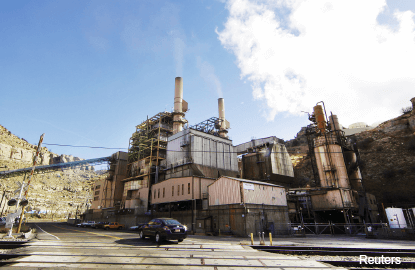
INVESTORS are advised to factor in “shadow” carbon prices in light of US President Barack Obama’s sweeping new policy, Clean Power Plan (CPP), to reduce carbon dioxide emissions from America’s power plants moving towards cleaner fuels, renewable energy and consumer-generated power. “Shadow” price is the estimated price of an item or service for which the market price is yet to be determined.

Citi Global Perspectives & Solutions (GPS), in its latest report “Time to price carbon: Obama’s Clean Power Plan alters energy landscape”, points out that the CPP will have a powerful impact that is expected to extend beyond US energy prices and assets to affect global climate policies.
On Aug 3, Obama released his ambitious climate policy targeted to transform the US’ electricity industry, pushing utilities in every state in the country to take cleaner energy more seriously.
The US is the world’s second biggest carbon emitter after China.
“The CPP is set to reshape risk and return in US energy markets — whether or not it is implemented,” states the report.
“The key implication of the CPP for global climate policy is likely not what it means for the United Nations process, but rather that it increases the possibility that other nations are willing to adopt similarly strong domestic policies at home.”
In view of the drastic impact of the plan — the myriad of legal, political and implementation risk up to its 2022 start date — the report stresses that it is more important to plan when and how much risks from carbon should be priced.
According to the US Environmental Protection Agency, the federal rule would result in an estimated annual cost of US$8.4 billion by 2030 and have total benefits, including public health benefits, of US$34 billion to US$54 billion per year by then.
“What we don’t know is when or how much these incentives will affect investment decisions and power prices. The organising facts and principles are simple: The power sector is responsible for about 40% of US’ carbon emissions, and coal is responsible for three-fourths of those,” says the report.
While it will be difficult for investors to quantify risks and dynamically price carbon risk given the complexity of the CPP, the report suggests that the easiest way would be to assume what the carbon price will likely be.
“Effects on energy and financial markets should be felt almost immediately, as power assets typically last 20 to 60 years — the CPP creates [nominal] incentives for early compliance and commodity futures curves should start reflecting potential costs of compliance for carbon pollution,” the report says.
“The CPP explicitly encourages a trading system. In a market-based system, the price of carbon should be set by the marginal abatement cost. But the rule will not necessarily result in an economically optimal carbon market, adding a wrinkle to economic forecasting.
“Other carbon markets offer some signposts, but for now, it may be ‘safe’ to assume a carbon price of somewhere between US$0 and US$50 per tonne. Emissions pricing has ranged between €0 and €30 per tonne in EU’s Emissions Trading System and between US$11 and US$23 per tonne in California’s AB32. The US government puts its ‘social cost of carbon’ at US$37 per tonne, though possibly higher depending on assumptions.”
Citi GPS says at the start of the CPP, the marginal cost of abatement will most likely be set by coal-to-gas switching in making gas more competitive than coal.
The plan suggests that coal is usually the “biggest loser” in any climate policy, while renewable energy and gas rise as winners, but the report finds that the expected outcome is not guaranteed.
Citing the European power market as an example where commodity prices and renewable energy policies have been more influential than carbon prices, Citi GPS says “coal is much less of a loser, renewables get less support and gas becomes more of a loser”.
The report says the scenarios depend on the relative prices of gas and coal, the value of emission credits — which may make or break generation economics of fossil fuel — renewables tax credits and regional electricity demand growth as a function of energy efficiency and demand response efforts.
It also notes the effect of the CPP as a “positive incentive for renewable energy investment might be weaker, as the market is not able to easily price CPP’s incentives or lend against them”.
“Until this plan is translated into concrete economic incentives that investors can comfortably translate into cash flows, the renewal of the Production Tax Credits and Investment Tax Credits should remain much more important for renewables’ future,” says the report.
This article first appeared in Money + Wealth, digitaledge Weekly, on Sept 7 - 13, 2015. Click here to subscribe from RM30 for the digitaledge Weekly and digitaledge Daily.